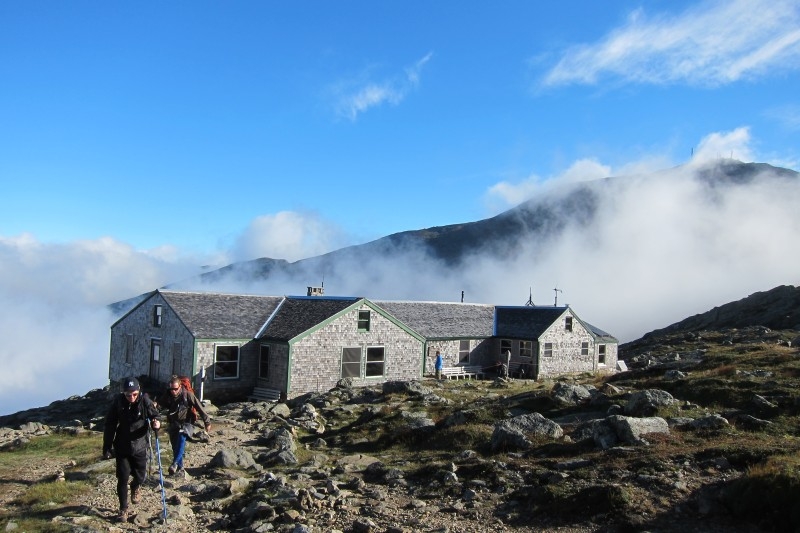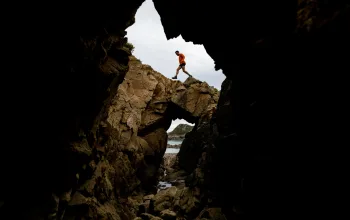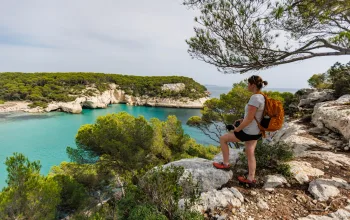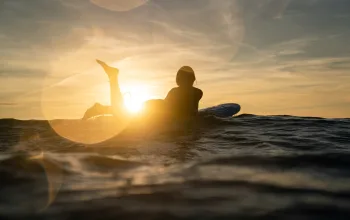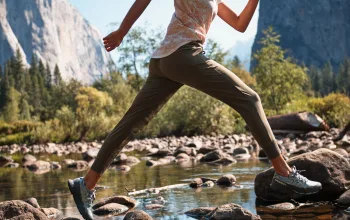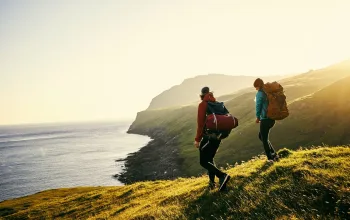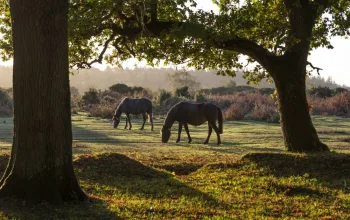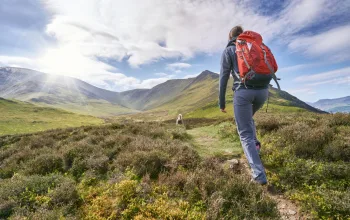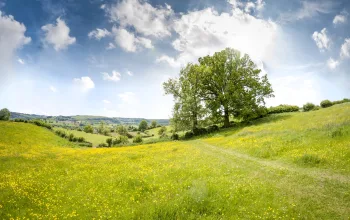Heading north out of Boston into New Hampshire, and the highest peaks on the USA's east coast, the urban sprawl is quickly left behind, giving way to dense forest, with the occasional hawk circling high above the road to signal that we're heading the right way to discover one of Eastern America's most legendary mountain ranges.
I've joined a small group of hikers, on a 'Grand American Adventure' tour to discover the hiking and huts of America's most famous long-distance walking trail: the Appalachian Trail. With me are a couple of Brits and three west coast Americans, and as we get closer to the Appalachian Mountain Club's Highland Centre at the entrance to Crawford Notch State Park, the landscape changes from rolling forest to steep cliffs, topped by the silvery glare of bare high-mountain summits reflecting the mid-morning sunshine.
The Crawford Notch State Park is named after Abel Crawford, who with his son Ethan Allen cut the first trail up Mount Washington, the highest mountain in the eastern United States, in 1819. In 1876 notable Boston academics formed the Appalachian Mountain Club, with a department whose sole goal was to build paths, camps and other conveniences. This led to the Madison Spring Hut, the first of the now eight high mountain huts being built.
We spend a couple of nights in the Highland Centre, which is an impressively large building with shared rooms, wholesome food and the chance to enjoy a beer or three. It's an excellent base and starting point for exploring the close-by lower summits and ridge hikes, which is exactly what we plan to do to find our walking legs.
After dinner on our first night, I venture outside with the centre's astronomical expert and his telescopes, and he helps me spot the rings of Saturn, Mars and just a few of the myriad of constellations in the startlingly clear sky.
Hut to Hut
After a couple of day hikes, the time comes to start our journey proper. We plan to hike between five of the high huts, but as we have to drop back down to the Highland Centre again on night three, we only pack up lunch and kit for two nights.
We jump back into the minibus and drive north through Crawford Notch, before heading west to the Gale River Trailhead. Despite only packing for two nights, the extra weight slows our already gentle pace still further. Thankfully it's a gentle climb and a good trail underfoot - excellent for making progress into the high peaks - but it's a humid day, and as the trail steepens towards Galehead Hut, my body starts to groan a little, informing me that I'm heading into more serious terrain.
Half a mile before Galehead Hut we reach a T-junction with the track we've all been looking to tread, the Appalachian Trail. Without ceremony we turn north along it and soon arrive, hot but not too bothered, at Galehead.
I sit down on a weather-beaten silvery grey wooden bench next to a near feral hiker, his long dark hair hiding a face almost as weather beaten as the bench we're sharing.
"You through hiking?"
What a strange thing to ask, I think, misunderstanding the question. I'm sitting outside a hut in the middle of a huge forest, which can only be reached on foot, or by helicopter.
"Nope," I venture, giving him a strange look, "I've still got to hike back out, unless you know of a road I don't?" To which I don't receive a verbal reply, only a wide-eyed stare and a shake of his twig-filled, tangled hair.
This was my first introduction to 'Thru Hikers'; a term which describes those who are hiking the whole Appalachian Trail, and therefore just passing 'through' a place.
Galehead Hut first opened in 1932 and is one of the most remote, overlooking the Pemigewasset Wilderness area. Sitting on its porch, a satisfying feeling of isolation washes over me, as this is my first vista in New Hampshire where I can't see any manmade impact; just a wild green canopy of trees, stretching away to a far off hazy horizon.
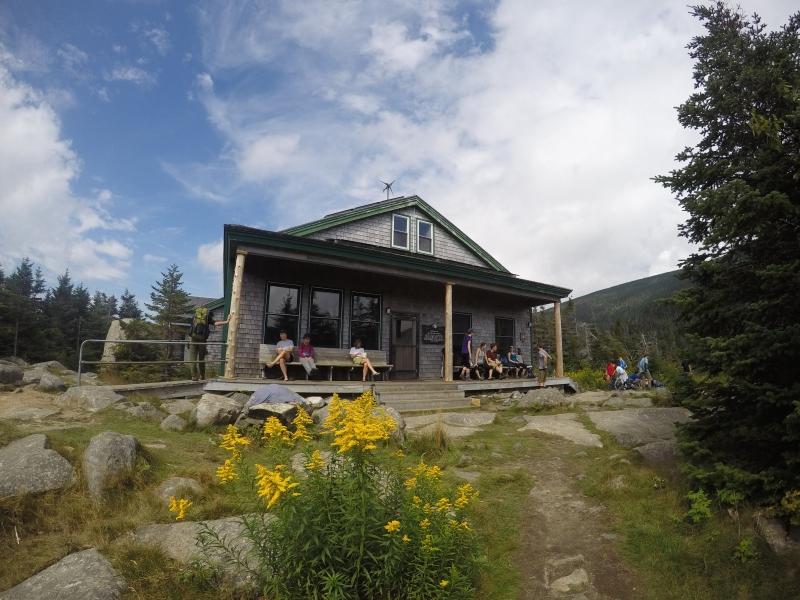
In the late 19th century, all this would have been primeval forest, but between 1880 and 1940 the whole of the White Mountains was deforested by the logging industry. A massive 66,000 acres of ancient woodland was destroyed. Although changed forever, it's quite simply amazing to see just how successful nature is at rejuvenating itself, with the fast growing birch trees forming most of the canopy that I now see in front of me; thankfully, the area is now protected.
Galehead Hut sleeps 38 people in three or four-tiered bunkbeds, across four rooms, and has a staff of three, who not only cook us a fantastic three-course meal, but who also are responsible for carrying in all the fresh food supplies and carrying back out all the rubbish.
I sleep well on my first night in an AMC hut (with the help of two sets of earplugs), until one of the staff wakes me with a song. It's the first time I've had a guitar playing alarm call, but I have to say, it certainly beats most regular wake up alarms!
Fortified with a porridge you could stand a spoon up in, eggs, bacon and coffee, and after diligently folding up my bunk blankets as instructed, we hit the trail again.
We only have 5 ½ miles to walk to Zealand Falls Hut, but the going is much rougher underfoot today, even with the odd scramble. It's a cloudy morning as we climb over South Twin Mountain, yet by the time we reach Zealand Mountain, we get a great view across Crawford Notch to the main Presidential Range - although Mount Washington still has its cloud hat on.
Our AMC guides had informed us that normal travel time in the White Mountains was 1mph; I'd initially been highly sceptical of this, thinking of unfit and underprepared holiday makers, but their timing was spot on. The paths are so steep and so direct, with never the sign of a switch back, that 1mph was as much as we mustered.
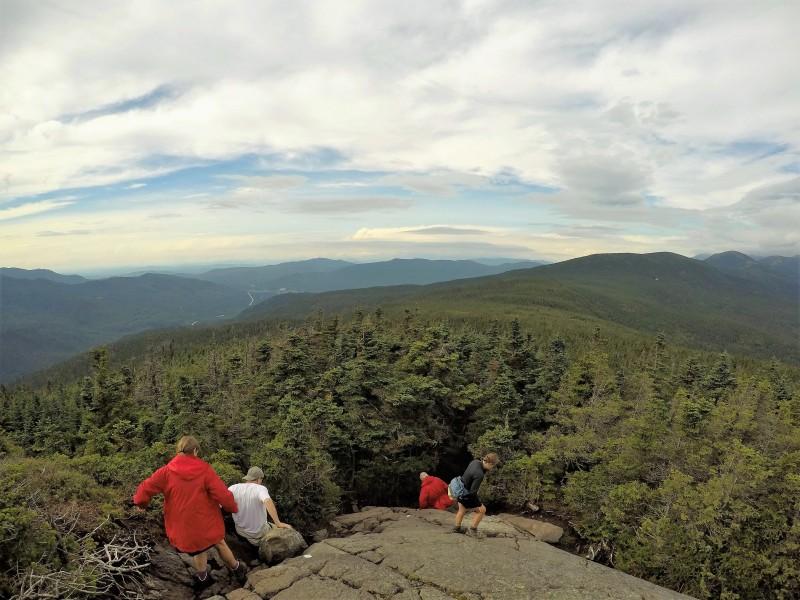
Zealand Falls Hut is another small hut, sleeping only 36 people. Being close to Zealand Falls, it's powered by hydropower, as well as solar and wind. As we arrive the porch is filled with through hikers, many of whom plan to find a nearby camping spot, while others work for their supper and the chance to sleep on the dining room's benches.
Each night a hut staff member holds a discussion with the guests on the environment around us, although tonight, this spot was ceded to Mountain Goat and Puddles - two young hikers who were nearing the end of their epic 2,200 mile hike along the Appalachian Trail. Through hikers always take a trail name; Mountain Goat got his from a tattoo, and Puddles from a leaky tent.
"We started in March in Virginia, so as to avoid the summer heat down south, and secondly, as it leaves enough time to reach the finish in Maine before winter sets in."
Winters in Maine are formidable, and as Maine has the 100 mile wilderness stage, it's not a place to be hiking past October. This leads to a bubble of through hikers being in New Hampshire in early September, hence us meeting so many.
"We've met some really cool Trail Angels."
"Trail Angels?" I ask.
"They're people who live and help out along the trail. We've met people who have picked us up, let us sleep in their house, and even taken us to a drive-in movie. Some spend the whole summer simply helping people hike the trail."
"The main thing we've learnt from doing this hike, is that there are people who are genuinely nice."
The Presidents
After a shower, a lunch food restock, and a night back at the Highland Centre, we begin to tackle the Crawford Path; the oldest continuously hiked trail in America. Ultimately leading to Mount Washington's summit - the highest of the Presidential Range's summits which are named after US presidents, the Crawford Trail is steep and unforgiving, rough underfoot and almost ridiculous in its direct nature. It's hard going, but with the Mizpah Springs Hut - well placed and easily reached in three hours - the trail is broken down into bitesize pieces.
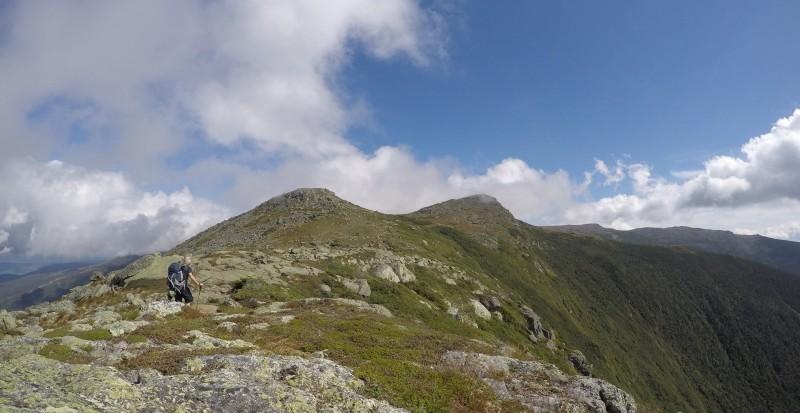
From the Mizpah Hut we cross Mt Pierce, Eisenhower and Monroe before reaching the Lakes in the Cloud Hut, which true to its name, is perched above a sea of clouds, which spread out like a marshmallow carpet across the valley.
Seeing My Washington's peak without cloud, and having a good few hours of sunlight left, we dump our bags at the hut and make a bolt up the 1 ½ miles to the summit. At 1,917m, Mount Washington is the east coast's highest point, and famed for bad weather, with a wind blast of over 230mph recorded on its summit in 1934.
The climb is a rock staircase most of the way up, and on reaching the summit I almost wish I hadn't bothered. The summit is packed, due to the road and cog railway, which take people all the way up. I feel a little cheated after all my efforts in getting here, as supersized tourists in flip-flops, queue for a photo with the summit sign. I guess the same can be said of many places, with isolation nearly always found in the far corners of a park rather than its highest point. Once over the initial shock, I marvel at the wonderful view across New England, towards Canada.
Our last full day on the trail is a stunning ridge hike along Gulfside Trail, taking in Mt Jefferson, Adams and Madison. Gulfside is an exposed trail, high above the tree line, running due north from Mt Washington. If I thought the previous day's walking was rocky, I was mistaken; today is like hiking a subsided rock pavement, broken only with long sections of sharp scree slopes. The views are fantastic but the going is really slow, and we reach Madison Hut a gruelling six hours later, which is apparently good going.
Madison Hut was first opened in 1889 and is the oldest hut site in the USA. The original hut burnt down in 1940 after a kitchen fire, and was first rebuilt in 1941 and more recently in the summer of 2010. While clean, fresh and new in design, with large windows and bright sleeping rooms, it still feels like there's a deep-rooted history here, perhaps because many of the original stones were used in the rebuild.
Our last morning is spent hiking back into the shade and shelter of the woods on Valley Way. Leaving the Appalachian Trail behind, which at this point takes a large loop south before heading north towards Maine, we pass large ponds created by old beaver dams. After a hard hour or so of down climb, the trail turns to a gentle forest track, and I relax into an easy pace, purposefully slowing my progress towards the trail head and the waiting minibus.
Having collected a few post hike beers from a liquor store, we climb out of the mini bus at Joe Dodge Lodge, at the main AMC base of Pinkham Notch Visitors Centre, and head straight for the showers. The hut is named after Joe Dodge, who started working for the AMC in 1922 and, over a 37-year career, managed and oversaw the expansion of the hut system. He's known as the father of the AMC huts, and apparently had more friends than there are trees in New Hampshire.
On my final evening I sit in on a lecture entitled 'Why are we here?' in the visitor centre's dining room. It spans from the big bang, through to the human race's imminent demise at the hand of a large asteroid. Strolling back to the lodge, under a sky of infinite points of light, I do feel somewhat insignificant - even if my legs are telling me I've just complete an anything but insignificant hike.
Our trip
The trip was booked through Grand American Adventures. Pete stayed at the Hyatt Regency in Boston; all other accommodation was with the Appalachian Mountain Club.


